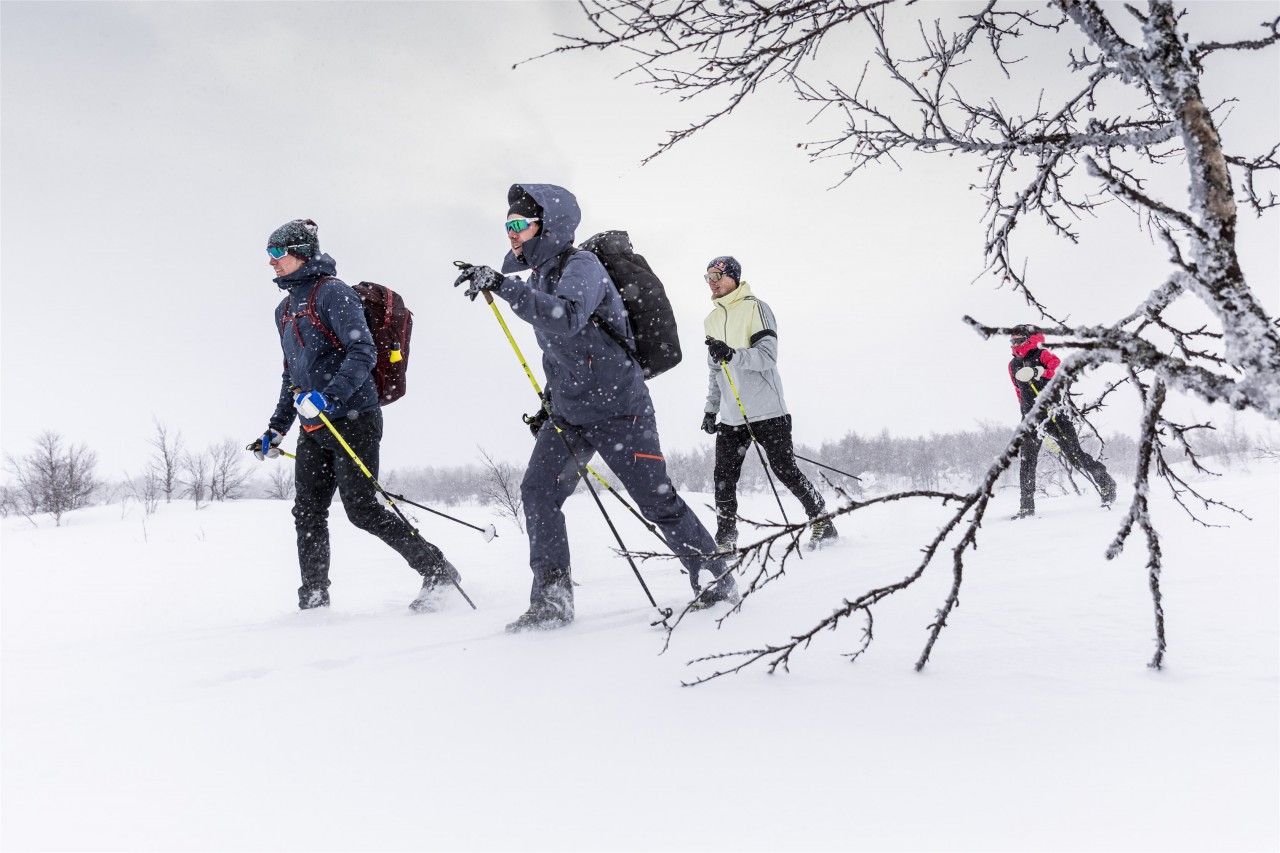 Freedom to explore 'off-track'
Freedom to explore 'off-track'
We already offer a wide range of cross-country adventures, but now we also give you the chance to get ‘off-track’. By this we mean cross-country skiing away from the prepared trails - a true mountain journey. If you are already a 'track' skier using the prepared trails, or an alpine skier who wants to develop new skills, then this could be for you?
For many years the staff at Tracks and Trails have ventured away from the trails and into the big ‘white’ unknown and we are now developing various off-track trips. We will be working with highly trained off-track ski guides and instructors who just love to get away from it all and for whom off-track is their passion.
There is a big difference in off-track technique with free heels and a full rucksack (around 10kgs, 22lbs), compared to off-piste or on-piste alpine skiing with fat skis, your heels clamped down, and a light rucksack.
Imagine you are a road cyclist, and you decide to do a mountain bike holiday. You are considering signing up for a totally different adventure holiday that requires a very different skill set, you still have two wheels but that is where the similarity ends. The same could be said for those who alpine ski, or cross-country ski on groomed tracks and now want to transition to nordic off-track touring. Welcome to a new world!
Very simply off-track means there are no prepared trails to follow. This means we have the joy and the challenge of making our own tracks across the winter landscape. With the correct skills and the right attitude it really does open up a whole new world of skiing. It certainly means you can experience more of a ‘wilderness’ adventure as there are normally no signposts, and the route from one accommodation to the next will often not have any markings either. However, around Easter time in Norway they will often mark the popular routes with birch twigs, known as ‘wands’ as this is when everyone loves to head to the mountains to ski tour the Nordic way.
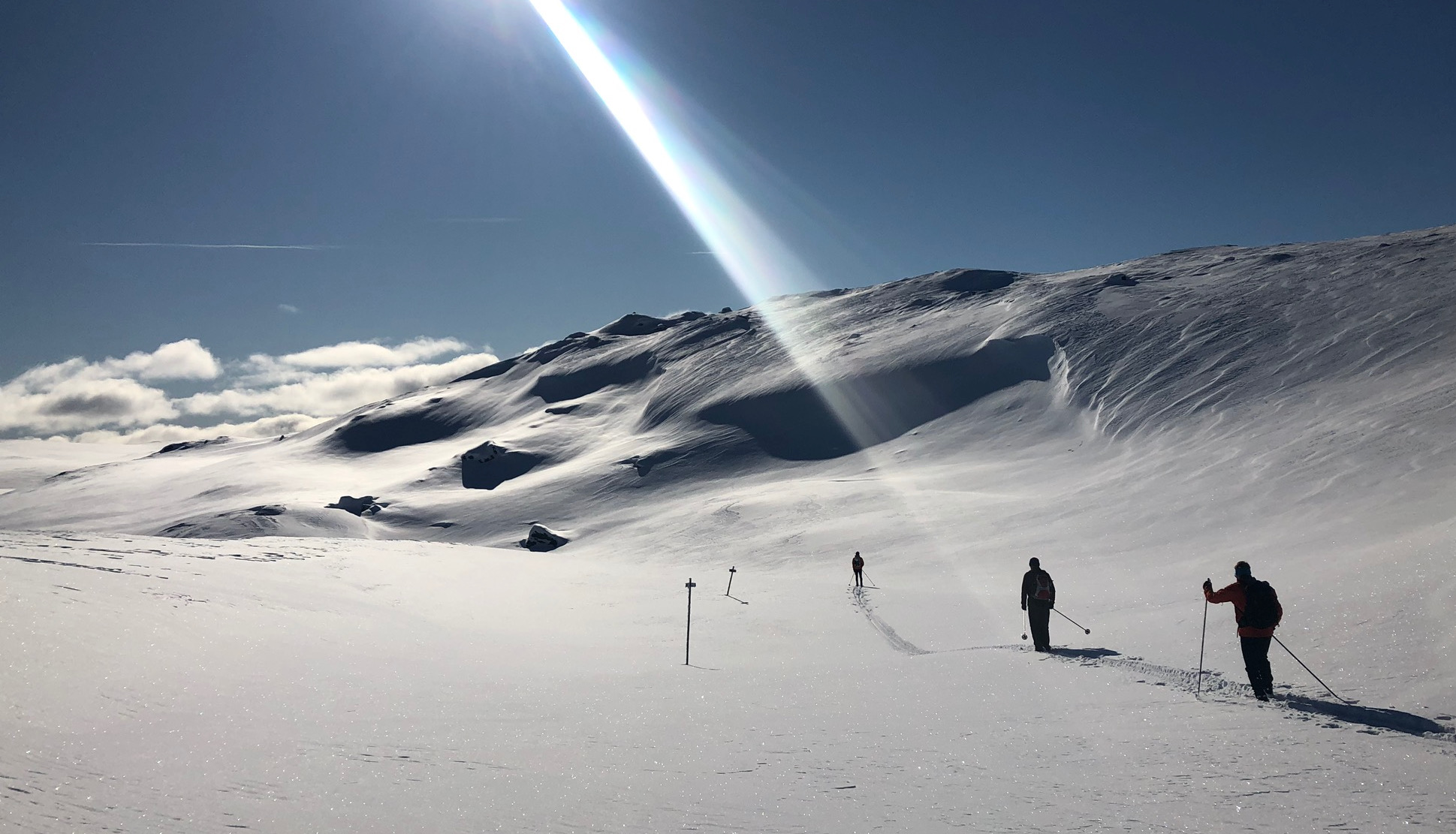 Glorious day 'off track' in the mountains of Norway
Glorious day 'off track' in the mountains of Norway
This type of skiing is often referred to as Nordic ski touring as it usually takes place in the Nordic countries, especially Norway, the birthplace of skiing. It is, however, still cross-country skiing and the equipment is similar to the equipment you will have used for cross-country track skiing, in that the boot is attached to the ski only at the toe. This is very different to what is known as alpine or downhill skiing where the whole boot is attached and the skis are much wider and therefore easier to control.
The skis and boots for ‘off-track’ are similar to track skiing, but are more robust as they are required to tackle what are often tougher and more demanding snow conditions. The skis will still be long and ‘skinny’, but nevertheless they will be wider than classic track skis, and they will usually have a metal-edge to increase efficiency when snowploughing. So, all in all a wider more stable ski. That's got to be good!

Fischer Transnordic 82 'off-track' skis have a metal edge, and are wider and more stable than 'track' skis
The boots will be more like a walking boot and should be warm and waterproof. They will attach to the ski only at the toe and because we are talking about ‘off-track’ the toe bar which clips your boot onto the ski will be thicker, wider, and stronger than track boots to better deal with an uneven snow surface which will put more force through the ski and the binding.
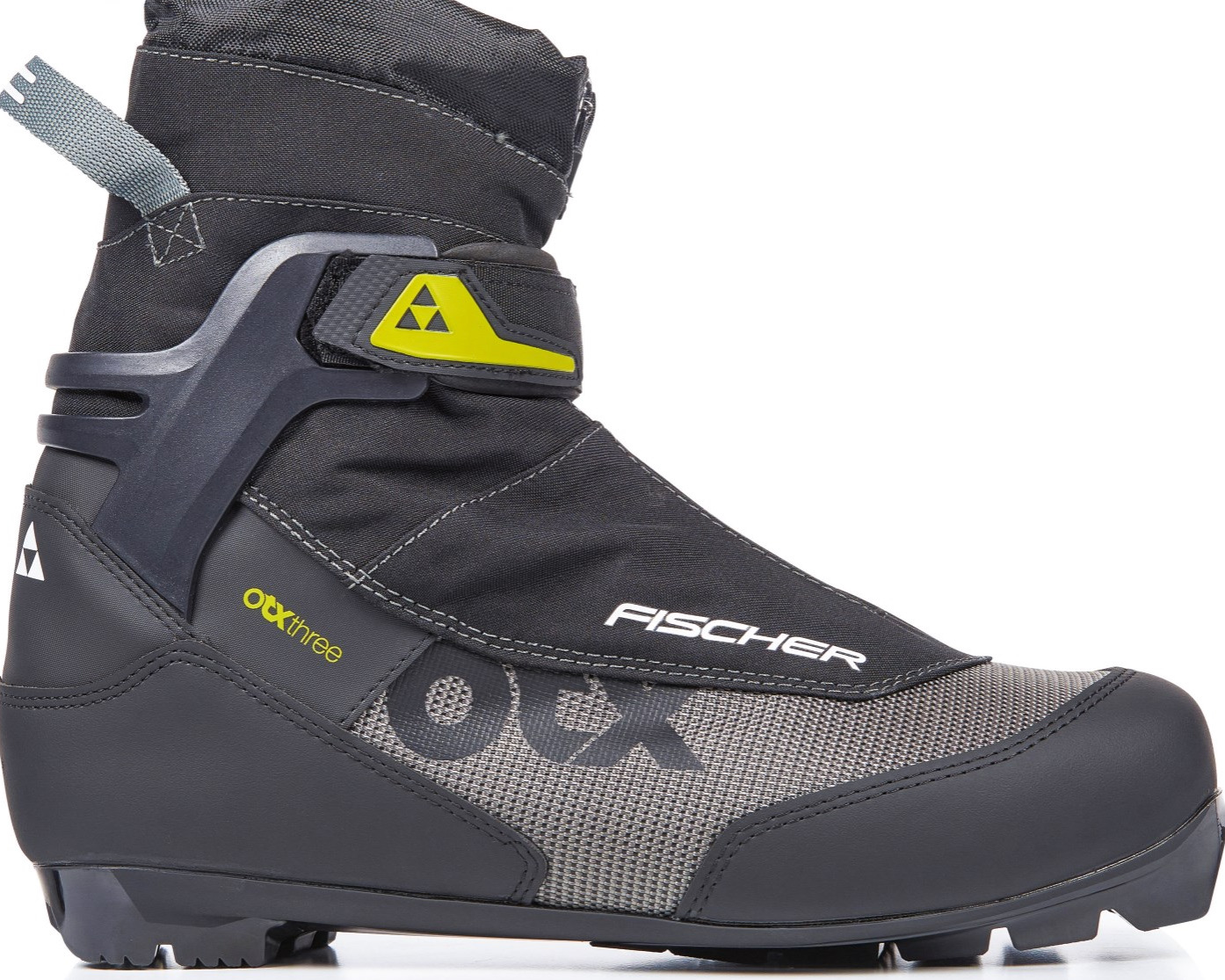
An 'off-track' boot is more robust than a 'track' boot - comfortable, warm and waterproof
The other type of boot often used on the more challenging off-track trips, such as our Jotunheim: Pines to Peaks, is what's known as a plastic touring boot, such as the Scarpa T4 which is heavier, but offers more control and ankle support. There is no simple answer to your query about which boots are best for you and it really is a matter of preference. A leather boot will offer less stability and control, but on trips where you have a long distance to cover the leather boot may be more comfortable and achieve a better 'kick and glide'.
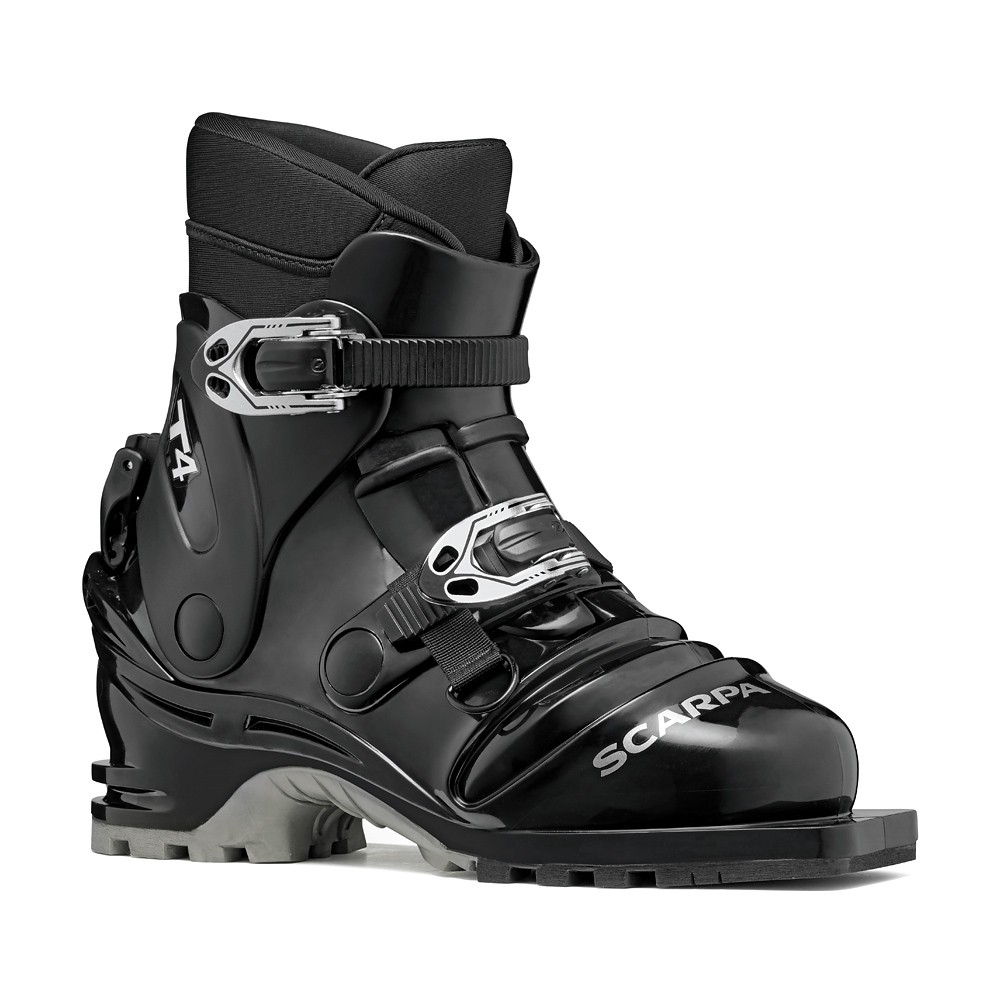
The Scarpa T4 touring boot offers more support and control
In general the equipment must be hired in your country of residence as it is quite difficult to be able to hire in Norway. At first we were confused by this but, of course, all Norwegians are born on skis and they all have their own, hence the lack of hire shops. It took us a while to work this out!
This system of hiring before leaving home has always worked well. It’s just a case of being prepared and organising it in advance. Of course, having your own boots does make life easier (and more comfortable) and removes one more variable when it comes to hiring kit.
You do require an additional skill set to get the most out of off-track. You need to be able to use a kick turn or star/step turn to deal with deeper heavier snow, in other words if you find that due to conditions you cannot snowplough or parallel turn you need to find other techniques, such as a kick turn. You need to be able to also side-slip, which is letting the skis 'skid' sideways down a section that may be too icy to tackle in any other way.
You should be able to traverse a slope to control your speed, and to react to changes in the feel of the snow under your skis. You will also have to adapt your position to take account of a heavier rucksack (10kgs, 22lbs) as mostly we are skiing from mountain hut to mountain hut and you will need extra items for your overnight stays. The great thing about venturing off-track is that you will develop new skills and confidence that will cross over into your other ski disciplines.
Mental attitude is also very important as you might have wild weather to deal with, but as always your Tracks and Trails ski guide will help you learn and adjust to what may be a new experience. Good self-management skills are essential in terms of keeping yourself warm, fuelled, and hydrated.
From personal experience being faced with the challenge of getting from one cosy mountain hut to another is to be savoured. How often in todays society do we really have the chance to push ourselves out of our comfort zone and into the big wild world of winter mountains. A wonderful excuse to tell the ‘office’ you are incommunicado and to avoid the news, and social media!
We would strongly advise that you commence your off-track career with a guided trip. You need to be an experienced navigator and route finder to undertake off-track journeys from one mountain hut to another, and it is an undertaking that cannot be taken lightly. On a Tracks and Trails trip you can relax and enjoy the scenery while your ski guide does the route finding.
Above we referred to mental attitude and we would like to point out your ski guide will often have to focus on the route finding which means that we need you to be prepared to manage your own needs in terms of warmth, nutrition, hydration etc and to work as a team.
For many this is one of the best elements of Nordic ski touring - relying on each other and working together to reach a common goal, a journey in the winter landscape that is truly shared.
The film below gives a wonderful example of the terrain that 'Expert' off-track skiers might tackle. Our introductory trips are conducted in terrain which is gentler and less remote allowing skills to be honed before attempting journeys which are more committing.
Film by Geordie Stewart - the Army Training Regiment Winchester skied 200km in 7 days across Hardangervidda and Jotunheimen mountain range.
We love the accommodation on these Norwegian trips. We often spend the first and last night in an hotel, usually in a remote location in the snowy mountains. Sometimes we even have a cosy hotel in the middle of a trip such as the the Jotunheim Ski Trail trip.
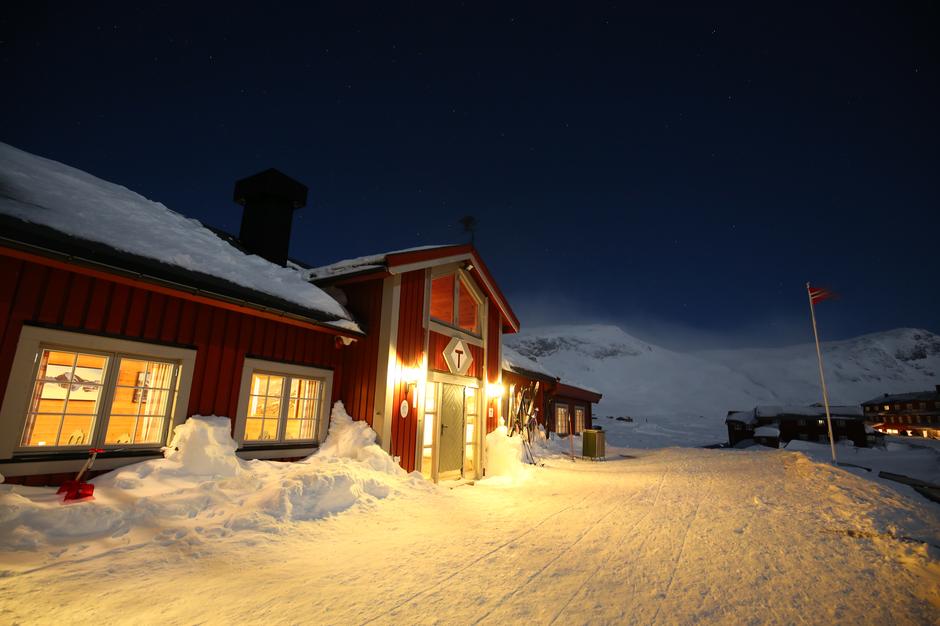
The DNT hut at Fondsbu - a welcome cosy haven in the winter wilderness
However, Nordic ski touring is synonymous with the world famous DNT hut system. This is essentially the Norwegian Trekking Association which manages a system of 550 mountain huts, either staffed or self-service, as well as 7,000 km of ski trails. At the staffed huts you can expect your meals to be prepared by the staff, and often they have more twin rooms, rather than small dormitories. Some such as Fondsbu and Haukeliseter even have hot tubs!
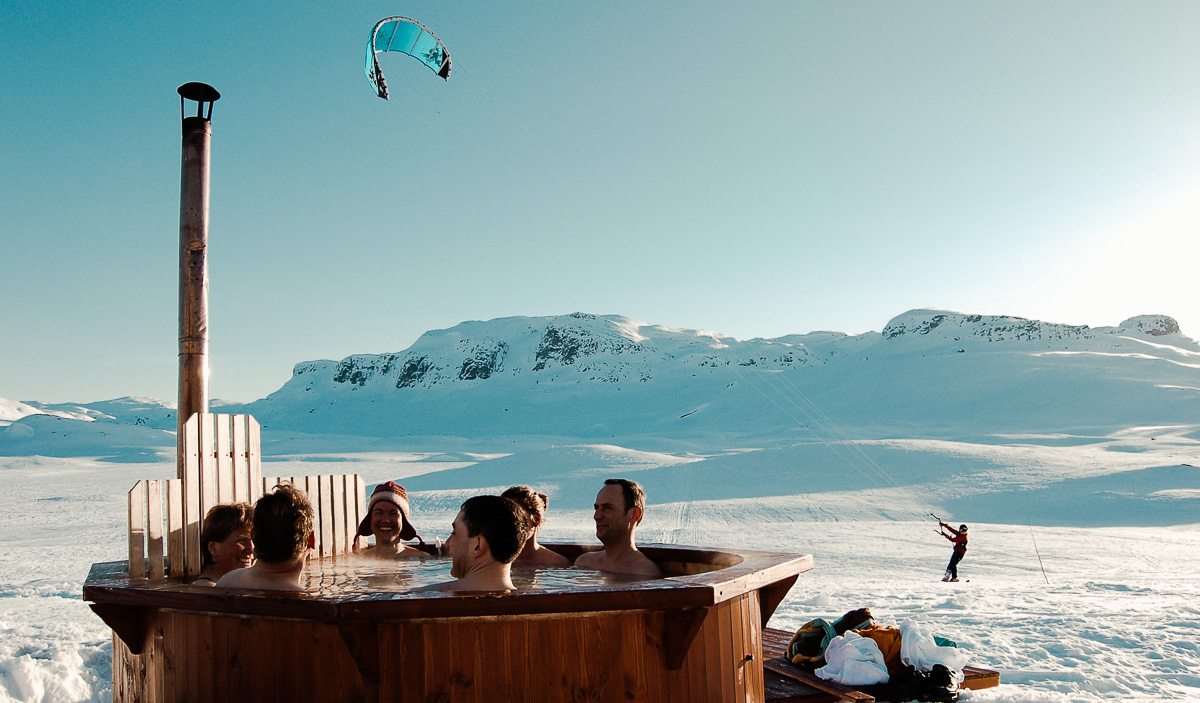
At Haukeliseter DNT hut there is even a hot tub - what a view!
In self-service huts, as the name suggests, it’s a case of DIY (Do-It-Yourself). We all share the jobs such as gathering snow to melt it for tea and washing. Chopping firewood for the wood burning stoves that are in every hut, and generally tidying up and leaving the hut spick and span for the next visitors. It really does feel like an adventure. We love it!
You will need to carry a sheet sleeping bag liner for hygiene reason, though blankets and pillows are provided, but otherwise it’s just a case of some extra clothes, a small wash kit, and a few essential items. We do, however, share out some group kit such as shelters, snow shovels, and ski waxes and you will be expected to participate.
If you have previously only done track skiing you will be familiar with skis that are either fishscales, skintec or similar, or grip waxes. All do the same job - the textured zone under your feet grips the snow crystals allowing you to propel the ski forward. The only difference with off-track is that we use 'skins' which are not permanent and can be removed from the ski. For track skiing we would mostly use grip wax, or fishscales, but due to the nature of the off-track terrain we may need more ‘stick’ or traction for skiing up steeper ground to perhaps reach a summit. Those of you who have alpine ski toured will understand the concept as its basically the same for Nordic ski touring.
Generally we offer off-track trips in March, and April when we have more daylight hours and the conditions are more settled. In Norway there is skiing in the mountains often until late May. Also the DNT hut system which we use on many of these journeys tends to open some of its serviced cabins around mid-March, and we require these to be open to complete some of our trips.
Our best suggestions for those who wish to experience off-track are as follows:
Alpine Skiers: We recommend that you join our Be a Better Skier week in Norway, to acquire nordic track skills, then join our Kvitåvatn: Off Track Skills & Touring to acquire off-track skills on nordic skis.
Cross-country Skiers: We recommend that you join our Kvitåvatn: Off Track Skills & Touring to acquire downhill off-track skills.
For a full description of our trip grades for off-track please check out this page.
We only offer one set of dates for each of our off-track trips, however, if these do not work for you and you are a group of friends then we are always flexible with regard to adjusting to suit if possible. Do not hesitate to get in touch to discuss our off-track trips, you may find a whole new ski world has opened up to you? Don’t we all just love an excuse to indulge in some new kit?
For more information about our off-track ski trips, speak to one of our expert team by calling +44 (0) 20 8144 64442 or email This email address is being protected from spambots. You need JavaScript enabled to view it. We also offer snowshoeing in winter, and in summer hiking and trail running.
